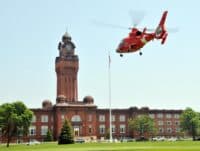

The U.S. Federal Aviation Administration (FAA) on Friday issued an emergency airworthiness directive requiring all airlines to inspect the fan blades on certain engines like the one that blew up on Southwest Airlines flight 1380 last week that cost one passenger her life and forced an emergency landing of the Boeing Co. (NYSE: BA) 737.
The CFM56-7B engine was manufactured by CFM International, a joint venture between General Electric Co. (NYSE: GE) and Safran Aircraft Engines.
Here is the text of the FAA’s announcement:
The Federal Aviation Administration (FAA) issued an Emergency Airworthiness Directive (EAD) that requires operators to inspect fan blades on certain CFM56-7B engines within 20 days.
The directive is based on a CFM International Service Bulletin issued today and on information gathered from the investigation of Tuesday’s Southwest Airlines engine failure. The inspection requirement applies to CFM56-7B engines. Specifically, engines with more than 30,000 total cycles from new must complete inspections within 20 days. The EAD becomes effective upon publication. The engine manufacturer estimates today’s corrective action affects 352 engines in the U.S. and 681 engines worldwide.
In its service bulletin, CFM recommended that CFM5607B engines used to power 737 Next Generation planes be subject to an ultrasonic inspection of the engine’s fan blades within the next 20 days for engines with more than 30,000 takeoff-and-landing cycles.
For engines with 20,000 cycles, the engine maker recommends an ultrasonic inspection by the end of August. For all other engines, inspections are recommended when the engine reaches 20,000 cycles.
Following the first inspection, CFM recommends another inspection every 3,000 cycles or about two years of service.
Approximately 14,000 CFM56-7B engines are in operation, according to CFM, and the fan-blade inspections recommended within the next 20 days will affect about 680 engines. More than 150 already have been inspected the company said. Inspections recommended by the end of August will affect an additional 2,500 engines.
The inspections, conducted on-wing with an ultrasonic probe along the surface of the fan blade, take about four hours per engine. CFM also noted that about 60 customers worldwide operate engines within the cyclic thresholds of the new service bulletin.
The CFM56-7B engine first entered service in 1997 on the Boeing 737 and has logged more than 350 million flight hours.
Sponsored: Want to Retire Early? Here’s a Great First Step
Want retirement to come a few years earlier than you’d planned? Orare you ready to retire now, but want an extra set of eyes on your finances?
Now you can speak with up to 3 financial experts in your area for FREE. By simply clicking here you can begin to match with financial professionals who can help you build your plan to retire early. And the best part? The first conversation with them is free.
Click here to match with up to 3 financial pros who would be excited to help you make financial decisions.
Thank you for reading! Have some feedback for us?
Contact the 24/7 Wall St. editorial team.
 24/7 Wall St.
24/7 Wall St.

